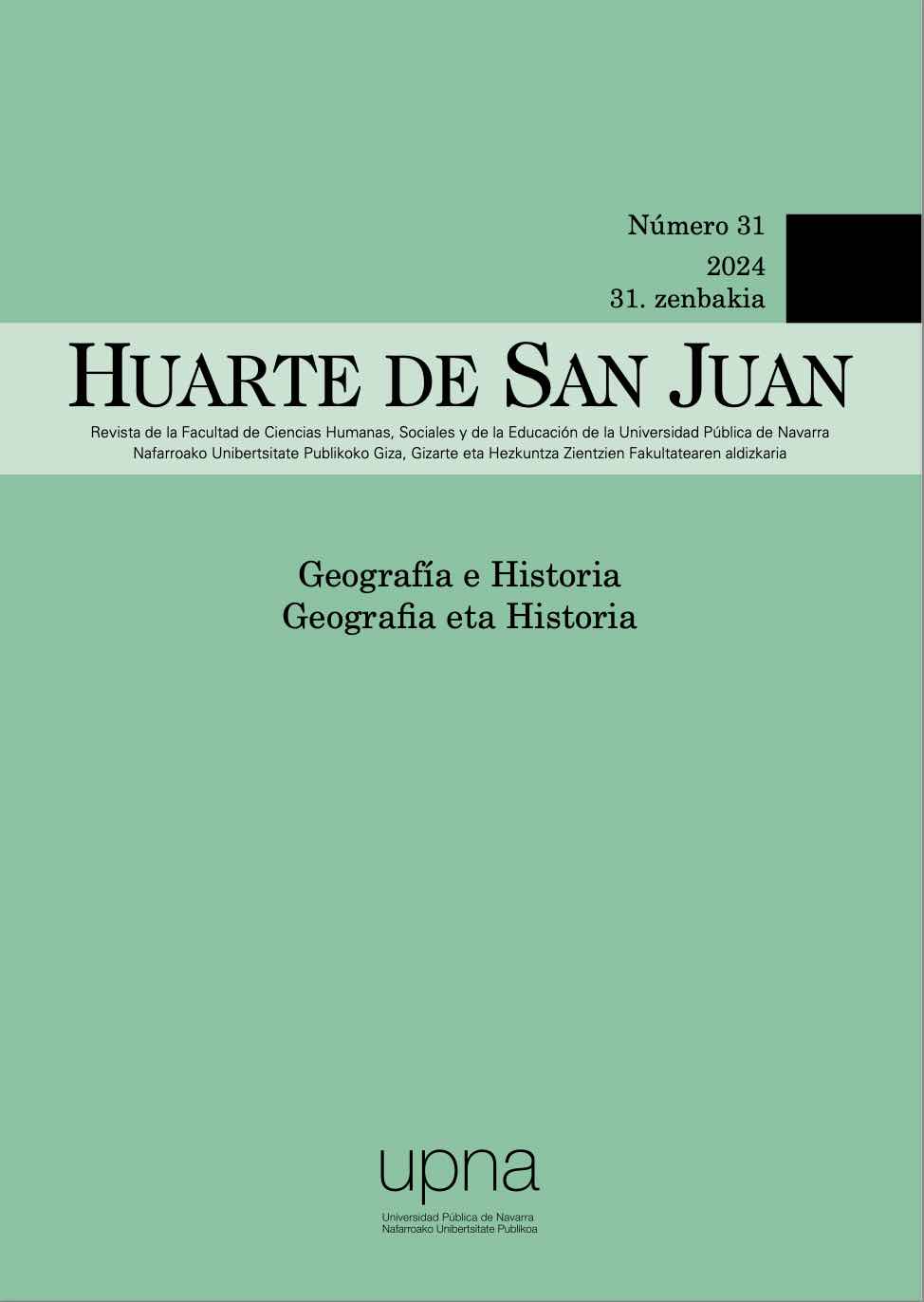Grafitos nocturnos en la República Romana: populismo y el anti-Estado
DOI:
https://doi.org/10.48035/rhsj-gh.31.2Palabras clave:
grafitos, Roma, noche, populismo, subversiónResumen
Este artículo sostiene que los graffitis populistas en la República Romana, incluidos ejemplos famosos de las secuelas de la muerte de Cayo Graco y las últimas semanas de la vida de Julio César, en ocasiones se produjeron intencionalmente durante la noche, no solo por la seguridad y el anonimato de la oscuridad, sino también para generar el máximo impacto, con una sorpresa al amanecer que traspasó las barreras teóricas entre la noche populista y el día aristocrático. Varias fuentes indican que las instituciones formales de la res publica, dominadas por la élite, eran en gran medida de naturaleza diurna, de modo que el Estado quedaba efectivamente suspendido cada atardecer y la noche se convertía en territorio de los marginados. Los grafitis de este contexto, cuando se revelaron nuevamente al amanecer, representaban el mensaje de un anti-Estado al «legítimo», una especie de tecnología de iluminación que facilitó la participación popular en debates políticos de los que de otro modo estarían excluidos procesalmente.
Descargas
Citas
Bessone, Luigi, «Le lunghe notti del 63», Acta Classica, 42, 2006, pp. 57.79.
Chaniotis, Angelos, «Epigraphy of the Night», in Carlos Noreña and Nikolaos Papazarkadas (eds.), From Document to History: Epigraphic Insights into the Greco-Roman World, Leiden, Brill, 2019, pp. 13-36.
Ekirch, A. Roger, At Day’s Close: Night in Times Past, New York, W.W. Norton & Co., 2005.
Fagan, Garrett G., «Urban Violence: Street, Forum, Bath, Circus, and Theater», in Werner Riess and Garrett G. Fagan (eds.), The Topography of Violence in the Greco-Roman World, Ann Arbor, University of Michigan Press, 2016, pp. 231-247.
Flower, Harriet, Ancestor Masks and Aristocratic Power in Roman Culture, Oxford, Clarendon Press, 1996.
Fuhrmann, Christopher J., Policing the Empire: Soldiers, Administration, and Public Order, Oxford, Oxford University Press, 2012.
Hillard, Tom, «Graffiti’s Engagment. The Political Graffiti of the Late Roman Republic», in Gareth Sears, Peter Keegan, and Ray Laurence (eds.), Written Space in the Latin West, 200 BC to AD 300, London, Bloomsbury, 2013, pp. 105-122.
Hölkeskamp, Karl-Joachim, Reconstructing the Roman Republic: An Ancient Political Culture and Modern Research, Princeton, Princeton University Press, 2010, (trans. Rekonstruktionen einer Republik, Munich, Oldenbourg Wissenschaftsverlag, 2004).
Hölkeskamp, Karl-Joachim, Roman Republican Reflections: Studies in Politics, Power, and Pageantry, Stuttgart, Franz Steiner, 2020.
Ker, James, «Nocturnal Writers in Imperial Rome: The Culture of Lucubratio», Classical Philology, 99.3, 2004, pp. 209-242.
Koslofsky, Craig, Evening’s Empire: A History of the Night in Early Modern Europe, Cambridge, Cambridge University Press, 2011.
Linn, Jason, The Dark Side of Rome: A Social History of Nighttime in Ancient Rome, Santa Barbara, dissertation, University of California, Santa Barbara, 2014.
Metzger, Ernest, «Civil Procedure in Classical Rome: Having an Audience with the Magistrate», in Francesco de Angelis (ed.), Spaces of Justice in the Roman World, Leiden, Brill, 2010, pp. 27-41.
Milnor, Kristina, Graffiti and the Literary Landscape in Roman Pompeii, Oxford, Oxford University Press, 2014.
Montlahuc, Pascal, Le Pouvoir des bons mots. «Faire rire» et politique à Rome du milieu du IIIE s. a. C. à l’avènement des Antonins, Rome, Bibliothèque des Écoles françaises d’Athènes et de Rome, 2019.
Morstein-Marx, Robert, Mass Oratory and Political Power in the Late Roman Republic, Cambridge, Cambridge University Press, 2004.
Morstein-Marx, Robert, «Political Graffiti in the Late Roman Republic: Hidden Transcripts and Common Knowledge», in Christina Kuhn (ed.), Politische Kommunikation und öffentliche Meinung in der antiken Welt, Stuttgart, Franz Steiner, 2012, pp. 191-217.
Morstein-Marx, Robert, Julius Caesar and the Roman People, Berkeley and Los Angeles, University of California Press, 2021.
Mueller, Hans-Friedrich, «Nocturni Coetus in 494 BC», in C.F. Konrad (ed.), Augusto augurio: Rerum humanarum et divinarum commentationes in honorem Jerzy Linderski, Stuttgart, Franz Steiner, 2004, pp. 77-88.
Mueller, Hans-Friedrich, «Spectral Rome from Female Perspective: An Experiment in Recouping Women’s Religious Experience (CIL 6.18817=ILS 8006=Oreli 2.4775)», Classical World, 104.2, 2011, pp. 227-243.
Nippel, Wilfried, «Policing Rome», The Journal of Roman Studies, 74, 1984, pp. 20-29.
Palmer, Bryan, Cultures of Darkness: Night Travels in the Histories of Transgression, New York, New York University Press, 2000.
Pieper, Christoph, «Nox rei publicae? Catiline’s and Cicero’s Nocturnal Activities in the Catilinarians», in James Ker and Antje Wessels (eds.), The Values of Nighttime in Classical Antiquity, Leiden, Brill, 2020, pp. 210-233.
Ramsey, John T., «At What Hour Did the Murderers of Julius Caesar Gather on the Ides of March, 44 BC?», in Stephan Heilen et al. (eds.), In Pursuit of Wissenschaft, Olms, Hildesheim, 2008, pp. 351-363.
Santangelo, Federico, Sulla, the Elites, and the Empire, Leiden, Brill, 2007.
Spaeth, Barbette, «”The terror that comes at night”: The Night Hag and Supernatural Assault in Latin Literature», in Emma Scioli and Christine Walde (eds.), Sub imagine somni: Nighttime Phenomena in Greco-Roman Culture, Pisa, Edizioni ETS, 2010, pp. 231-258.
Speksnjder, Simon A., «Beyond “Public” and “Private”: Accessibility and Visibility during Salutationes», in Kaius Tuori and Laura Nissin (eds.), Public and Private in the Roman House and Society, Journal of Roman Archaeology Supplements, 102, 2015, pp. 87-99.
Welch, Kathryn, «Lux and Lumina in Cicero’s Rome: A Metaphor for the res publica and Her Leaders», in Tom Hillard and Kathryn Welch (eds.), Roman Crossings: Theory and Practice in the Roman Republic, Swansea, Classical Press of Wales, 2005, pp. 313-337.
Zadorojnyi, Alexei V., «Transcripts of Dissent? Political Graffiti and Elite Ideology Under the Principate», in Jennifer Baird and Claire Taylor (eds.), Ancient Graffiti in Context, London, Taylor & Francis Group, 2010, pp. 110-133.
Descargas
Publicado
Cómo citar
Número
Sección
Licencia
Derechos de autor 2024 Joel Allen

Esta obra está bajo una licencia internacional Creative Commons Atribución-NoComercial-SinDerivadas 4.0.
La información referente al sistema de autoarchivo y política de derechos de explotación establecido por esta revista puede consultarse en DULCINEA.








